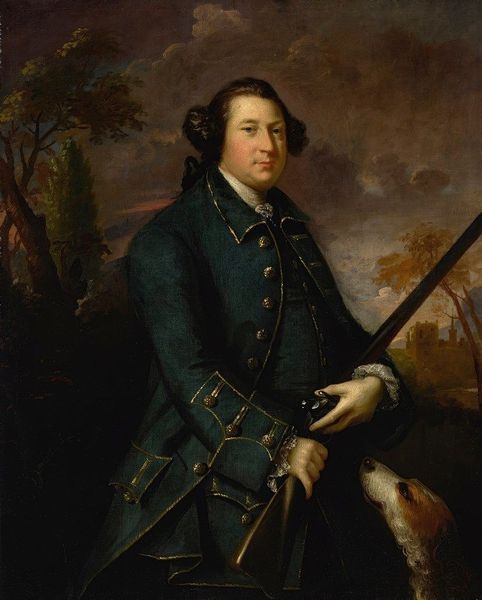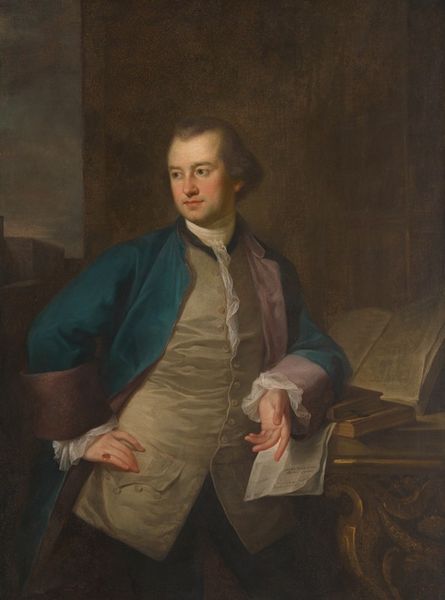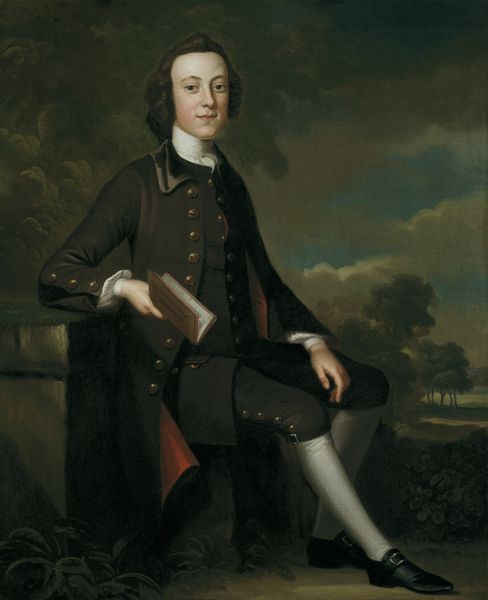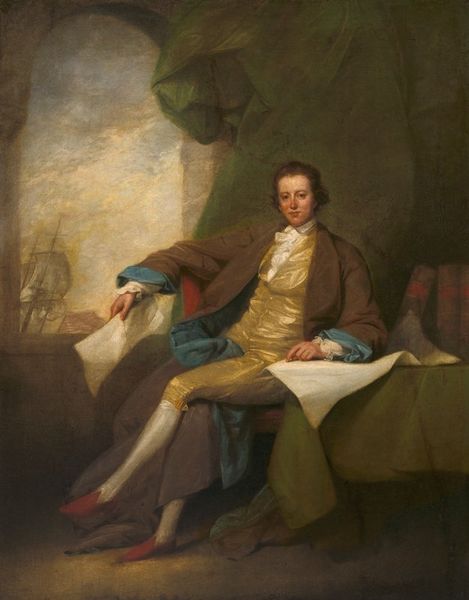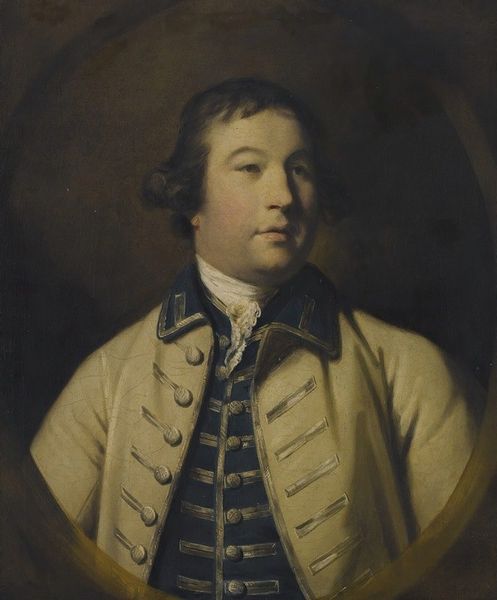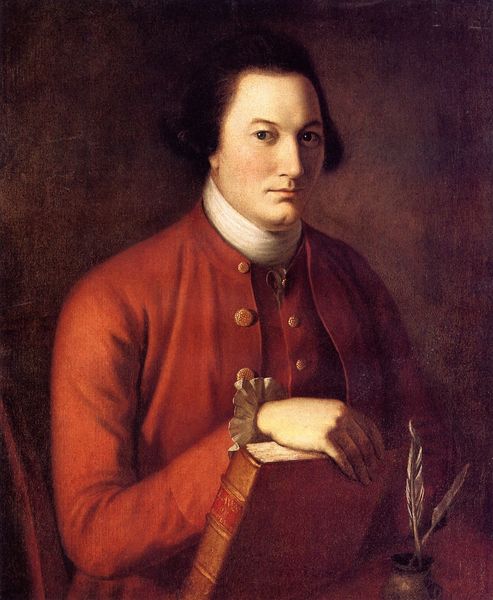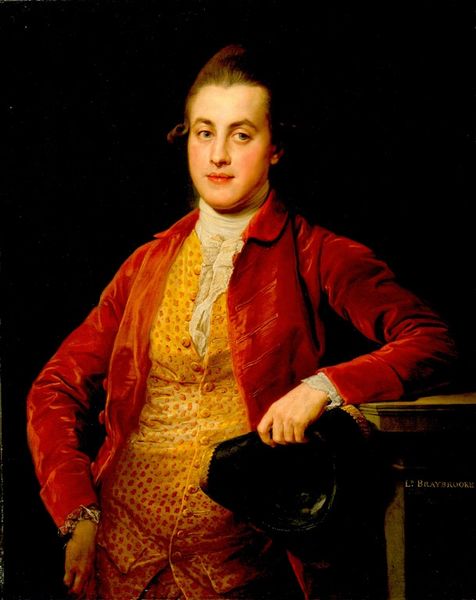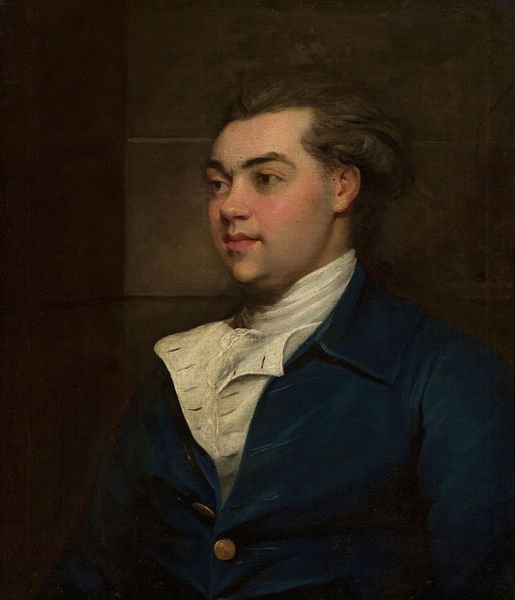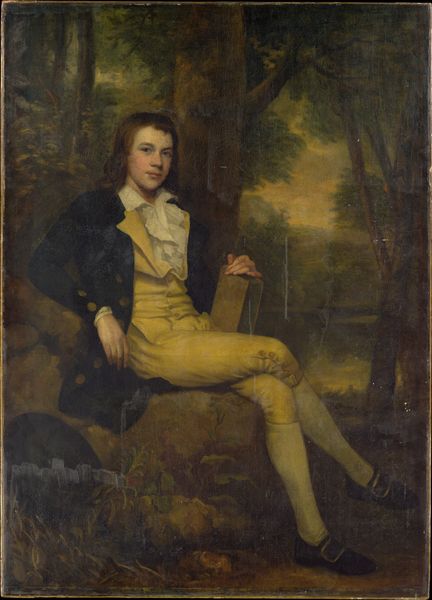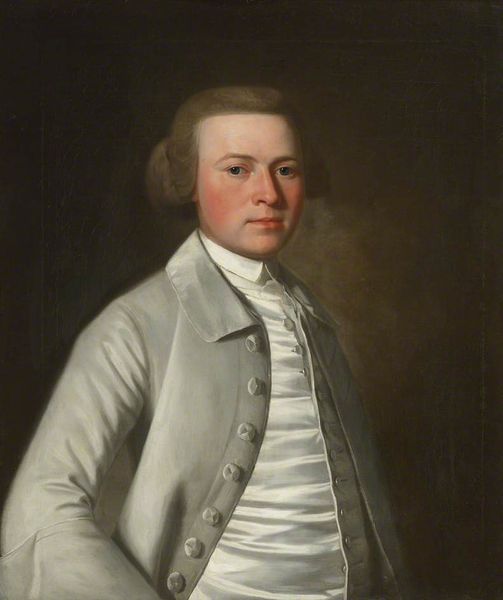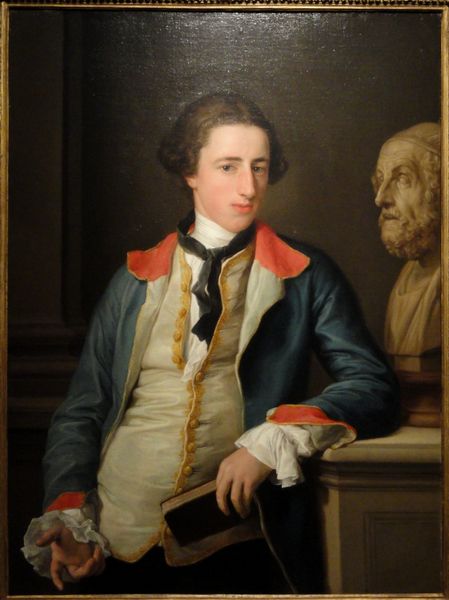
#
character portrait
#
portrait reference
#
portrait head and shoulder
#
animal drawing portrait
#
portrait drawing
#
facial portrait
#
portrait art
#
fine art portrait
#
celebrity portrait
#
digital portrait
Dimensions: overall: 127 x 101.6 cm (50 x 40 in.) framed: 149.9 x 124.5 x 9.5 cm (59 x 49 x 3 3/4 in.)
Copyright: National Gallery of Art: CC0 1.0
Curator: This is Charles Willson Peale’s portrait of "John Philip de Haas," completed in 1772. Editor: He looks so self-assured! It's that pose, the slightly arched brow. The textures, though, are what first grabbed me—the dull sheen of his suit versus the frothy lace. Curator: An astute observation. Peale’s mastery lies in these juxtapositions. The dark palette directs our gaze deliberately to the face, of course, but there are lovely secondary geometric patterns to discover. See how the table creates a visual dialogue with the rectangle of the picture frame? Editor: Good point. But my eyes are drawn to the sword. It isn’t just a detail; it's symbolic, right? De Haas, the military man, strength, readiness to defend. Curator: Precisely. The sword isn't merely a prop. Consider how it mirrors the fall of light across the sitter's vest, linking power and position visually. Further, it establishes a vertical vector countered by the book, which could denote both learning and privilege. Editor: It's interesting how those objects become cultural touchstones. We see echoes of power, knowledge, and a certain stoicism here—very much in line with Enlightenment ideals. He presents almost a masculine virtue. Curator: That's insightful. Peale creates a stage where each element plays its part within a codified visual language. The folds in the curtain, the angle of the sitter’s leg: none are random. The artist clearly deploys careful formalism in support of meaning-making. Editor: I hadn’t considered the angle of the leg playing a part! Seeing those elements function like that makes me rethink what a portrait could be in those times—far more than merely documentation of a man's face. Curator: And for me, it brings an understanding of just how deliberately posed everything must be. What appear to be realistic artistic renderings are instead precise structuralist considerations that support an intended social dialogue. Editor: Exactly, uncovering meaning through these visual artifacts from centuries ago allows the viewer a privileged window onto these long-gone lives and cultural symbols. Curator: Thank you. That illuminates my sense that Peale's structured approach to depicting De Haas provides us not only with an image of the man but also insight into the prevailing social and political currents of the period.
Comments
No comments
Be the first to comment and join the conversation on the ultimate creative platform.
